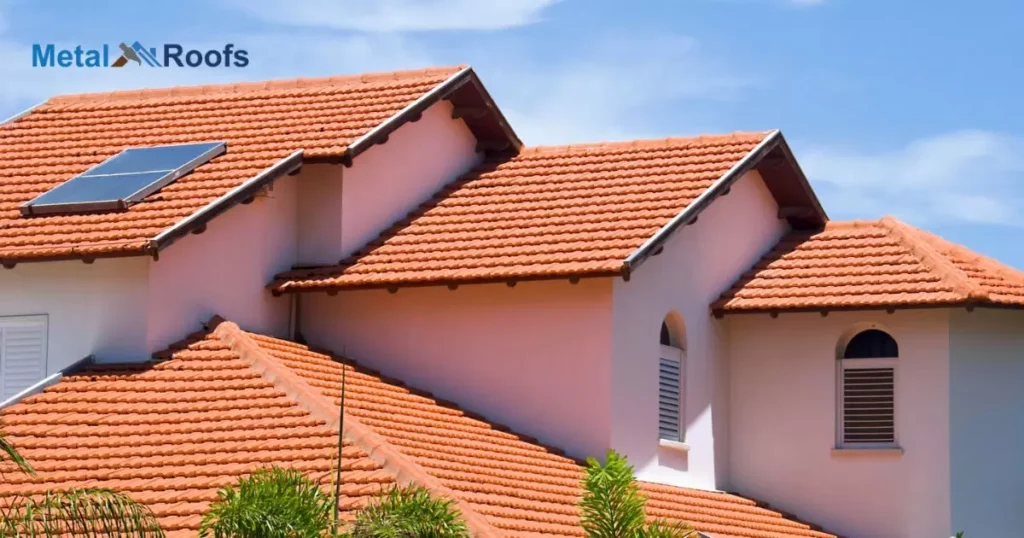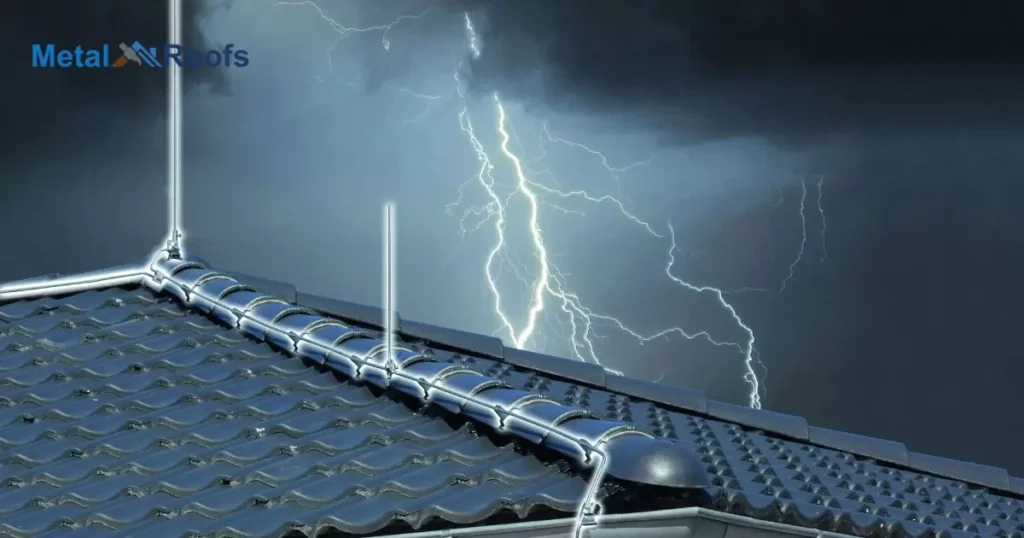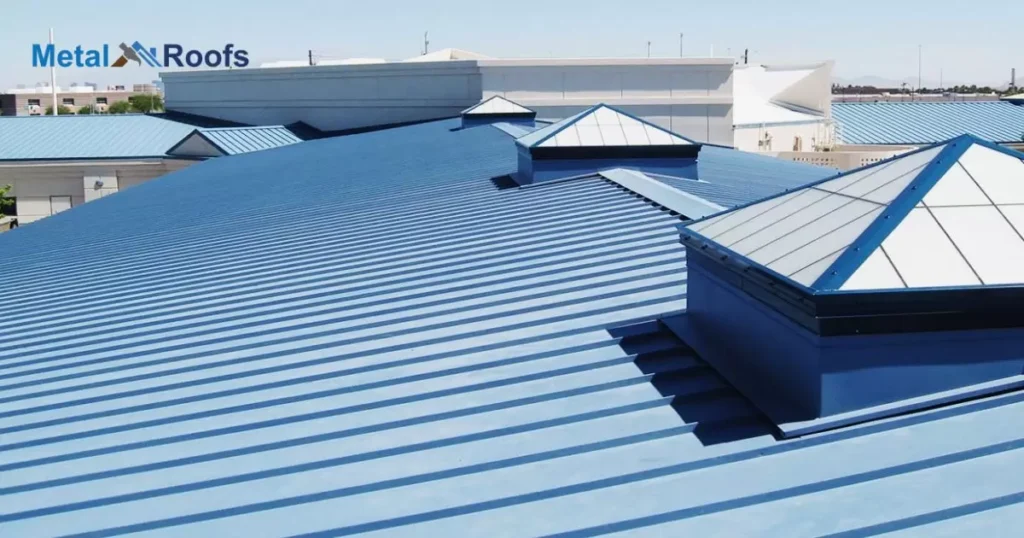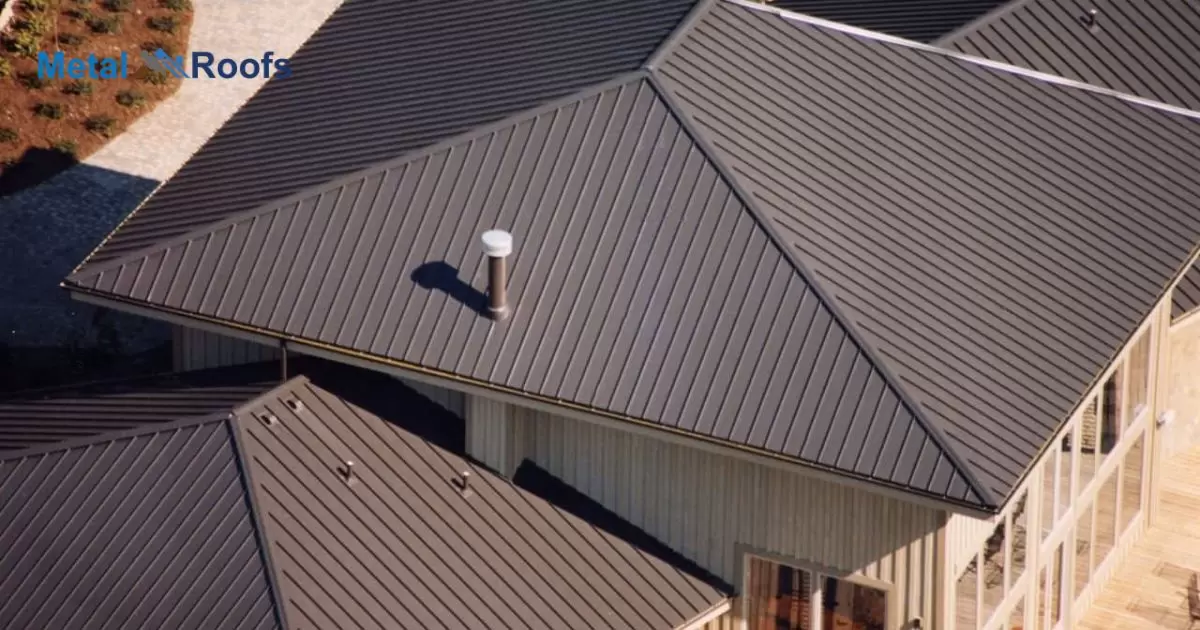Metal roofs are often touted as lightning-resistant but still carry some risk. Metal is an electrical conductor so lightning can potentially travel through the roofing material and damage the structure.
Considering a metal roof but worried about lightning strikes? Get the facts on Metal Roofs And Lightning. Learn how metal conducts electricity but can be installed to safely redirect charges using thick gauges, robust fasteners, surge suppressors and grounding.
Metal roofs can carry lightning risk despite claims of resistance. Keep reading to learn how proper installation using thick gauges, robust fasteners, surge suppressors and grounding allows metal roofing to safely redirect electrical charges from strikes.
Key Takeaways
- Metal roofs, while naturally conductive, benefit from lightning protection systems.
- Proper installation is vital for an effective shield against lightning strikes.
- In storm-prone areas, adding protection ensures enhanced safety for structures.
- Attention to detail during installation guarantees a robust and dependable system.
- Investing in lightning protection provides peace of mind and safeguards your property.
Introduction To Metal Roofs
Metal roofs are strong. They last long. You install them on homes. They keep the rain out. Metal roofs also resist fire. Metal roofs come in many colors. You can choose one you like.
Some look like shingles. Others resemble tiles. They’re not just silver. Metal roofs keep your house cool. They reflect the sun’s heat. It’s like wearing a light-colored shirt in summer. Your home stays comfortable. Metal roofs are a good choice.
How Do Metal Roofs Attract Lightning?

| Factors | Description |
| Height | Metal roofs often stand higher than surrounding objects, increasing their exposure to lightning strikes. |
| Conductivity | Metal is highly conductive, providing an attractive pathway for lightning to follow. |
| Sharp edges | The edges and peaks of metal roofs create points that can easily attract lightning bolts. |
| Location | Metal roofs in open areas or on top of hills are more prone to attracting lightning due to their elevated position. |
Metal roofs attract lightning because they conduct electricity. When lightning strikes, metal provides a direct pathway for the electrical charge to travel, making it more likely to hit a structure with a metal roof.
The elevated nature of many metal roofs increases their vulnerability to lightning. Tall structures, like buildings with metal roofs, are more prone to being struck because they are closer to the sky where lightning originates.
To minimize the risk, grounding metal roofs is crucial. Proper grounding allows the electrical charge from a lightning strike to safely disperse into the ground, reducing the potential for damage or fire. Without adequate grounding, the metal roof becomes a prime target for lightning, posing a greater danger to the structure and its occupants.
Can Metal Roofs Prevent Lightning Damage?
Metal roofs are like lightning superheroes. They don’t attract lightning; instead, they skillfully guide it away, preventing potential damage. With their conductivity superpower, metal roofs offer a safer shelter during storms.
Installing a metal roof is like giving your home a lightning-resistant shield. The secret lies in the metal’s ability to disperse the electric charge harmlessly, ensuring your home remains a lightning-free zone. So, when thunder roars, you can rest easy knowing your metal roof, including the edge of a roof that sticks out, has got you covered.
The Science Behind Lightning Protection Systems

Lightning protection systems shield buildings from lightning strikes. They work by providing a path of least resistance for lightning to follow, directing it safely into the ground. Metal rods, conductors, and grounding systems are key components in these protective setups. Lightning rods, mounted on structures, attract lightning and guide it away, preventing potential damage.
Types Of Lightning Protection Systems
Lightning protection systems come in various types, each serving a distinct purpose. Common systems include lightning rods, air terminals, and grounding networks. Lightning rods, often seen atop structures, intercept lightning, while air terminals provide additional points of attraction. The grounding network then ensures a safe discharge of the lightning’s energy into the ground, safeguarding structures from potential harm.
How Lightning Protection Systems Work?
Lightning protection systems function by offering a secure route for lightning to follow. Essential components include metal rods and conductors that guide lightning safely into the ground. These systems use the principle of providing a path of least resistance, preventing damage to buildings. Lightning rods, strategically placed on structures, play a pivotal role in attracting and redirecting lightning away from potential harm.
Benefits Of Installing Lightning Protection Systems
Installing lightning protection systems brings peace of mind. These systems safeguard structures, preventing potential devastation caused by lightning strikes. With metal rods and conductors in place, the risk of fire and structural damage is significantly reduced. Grounding systems ensure a safe path for lightning, making these installations a practical and valuable investment.
Do All Metal Roofs Need Lightning Protection?
Metal roofs generally possess inherent conductivity that aids in dispersing lightning strikes. While not all metal roofs demand additional protection, the necessity often depends on geographical factors.
In regions prone to intense storms, implementing lightning protection systems ensures an extra layer of safety for structures with metal roofing. These systems create a controlled path for lightning, minimizing the potential for damage.
The Importance Of Proper Installation

Proper installation is crucial for effective lightning protection systems. A well-installed system ensures that all components, from rods to conductors, work seamlessly together.
Precise installation guarantees the reliability of the system, offering peace of mind and safeguarding structures from the unpredictable force of lightning. Attention to detail during installation is the key to a robust and dependable lightning protection setup.
Frequently Asked Questions
What are the disadvantages of a metal roof?
Metal roofs may amplify noise during heavy rain, and they can be prone to denting if hit by large hail or falling branches.
What metal protects against lightning?
Copper is a metal that effectively protects against lightning due to its high conductivity, offering a reliable path for lightning to follow and safely disperse into the ground.
How do I protect my roof from lightning?
Install a lightning protection system with rods and conductors on your roof, providing a safe path for lightning to follow and dissipate harmlessly into the ground, safeguarding your structure.
Conclusion
In conclusion, the science behind lightning protection systems is paramount for safeguarding metal roofs and structures. Proper installation of these systems creates a reliable shield, guiding lightning away effectively.
It’s clear that metal roofs, while conductive, may not always require additional protection. Yet, in regions prone to storms, investing in a lightning protection system is a prudent measure. With the right setup, you can ensure the resilience of your metal roof against the unpredictable forces of lightning, offering both security and peace of mind for your property.











